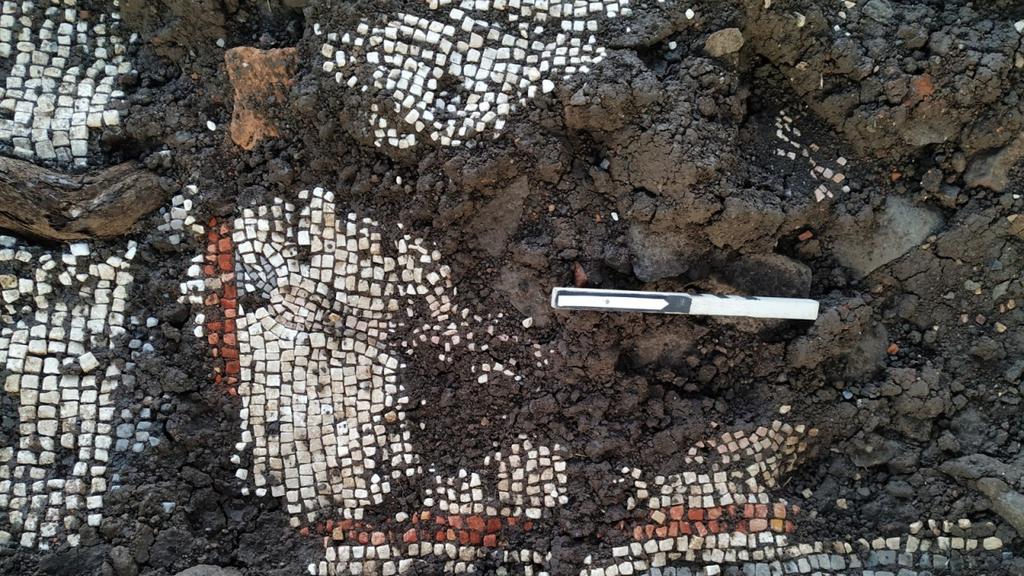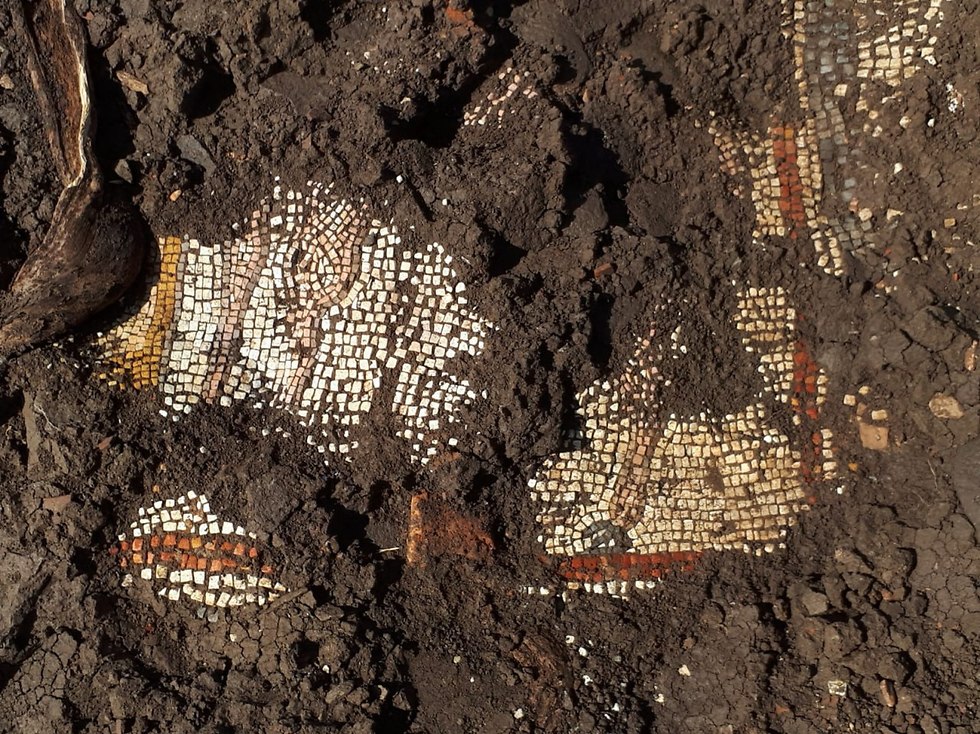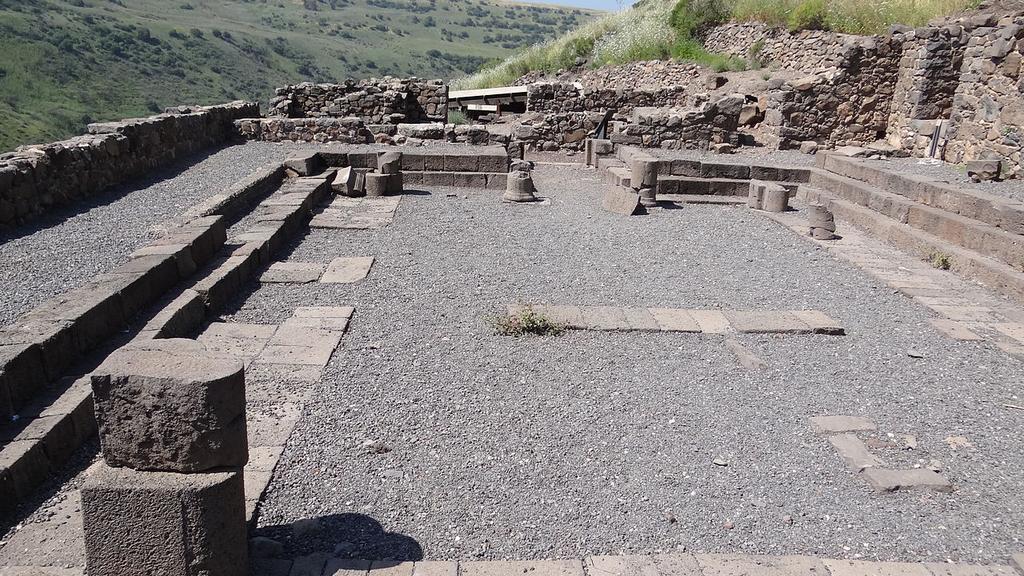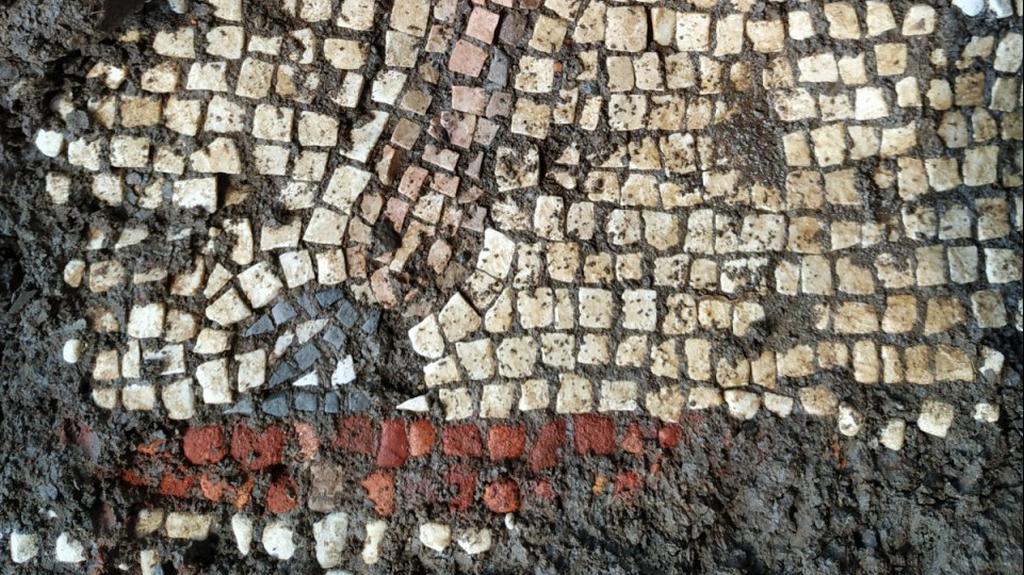Fragments of a mosaic depicting animal footprints were uncovered Monday during an excavation at a synagogue in the ancient settlement of Majdolia in the Golan Heights.
The synagogue was active in the first century CE, after the Second Temple was destroyed, to the end of the third century CE.
According to researchers, this is the oldest depiction of an ornate colorful mosaic found in the area.
Researchers from Haifa University say there is not much insight into how Jewish life was lived, on the Golan Heights specifically and in Israel generally, during the third century.
"In the third century we see an interesting combination of the already established tradition of synagogues, following the destruction of the Second Temple, with new artistic elements that will later become widespread, such as colorful animal mosaics," says excavation leader Dr. Mechael Osband of the Archeological Institute at Haifa University.
The Majdolia excavation site, which was uncovered five years ago, is dated to the middle of the Roman era, from approximately the middle of the first century to the abandonment of the settlement at the end of the third century.
Several years ago, archaeologists at the site discovered the remains of the synagogue - a rectangular building measuring 13 meters by 23 meters.
The discovery had vast importance to the historical record, as most experts assumed that the Jewish settlement on the Golan Heights ceased following the First Jewish–Roman War in 67 CE and the destruction of Gamla, a central trade and commerce hub in the area, during that period.
This new find strengths the notion that the Jewish settlement in the area continued even after the war.
Uncovered during the last excavation season at the synagogue, this new and important discovery was made as archaeologists tried to understand the progression of day-to-day Jewish life in the Golan Heights during the Roman period.
Because the settlement was abandoned at the close of the third century, there are barely any findings at the site, most of them not well preserved.
As result, only the fragmented bottom layer of the mosaic was preserved, probably due to human impact.
According to researchers, the fragments that were uncovered point to the floor of the synagogue once being colorful and filled with geometric shapes.
The central hall's mosaic was found to be complex and rich in shapes and colors, and despite its lackluster state, designs of footprints of birds and other animals could be identified.
"This is evidence for the synagogue transforming from a merely place of worship and education for a few to a center of prayer for the whole community," says Osband.
"We know that synagogues at the end of the Second Temple era served mainly as a place of Torah study," he says.
"Synagogues at the end of the Roman era, and especially in the Byzantine period, served as places of worship akin to little temples and are therefore much more luxurious, It is not uncommon that these synagogues also included fancy mosaics," he says.
"Our findings are some of the earliest to date indicating that as early as the third century synagogues were beginning to undergo this important change in people's consciousness."





